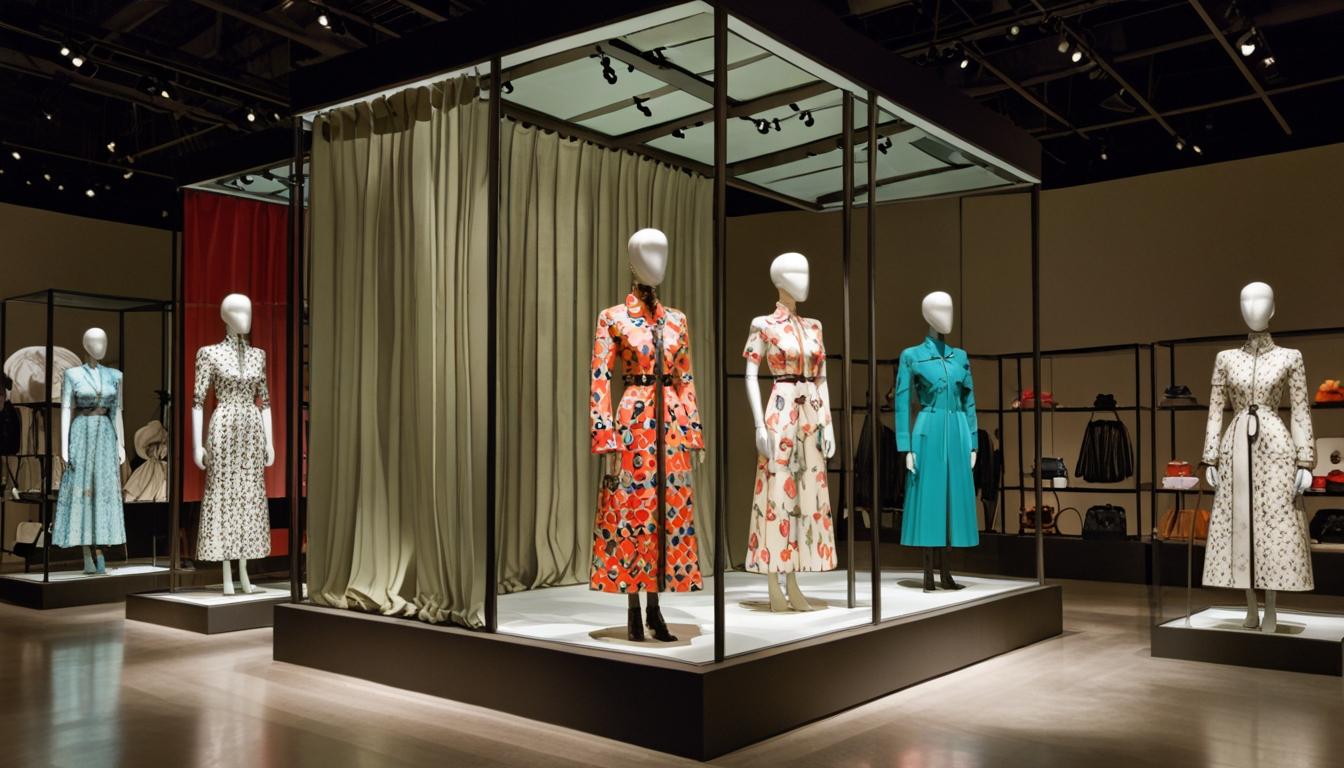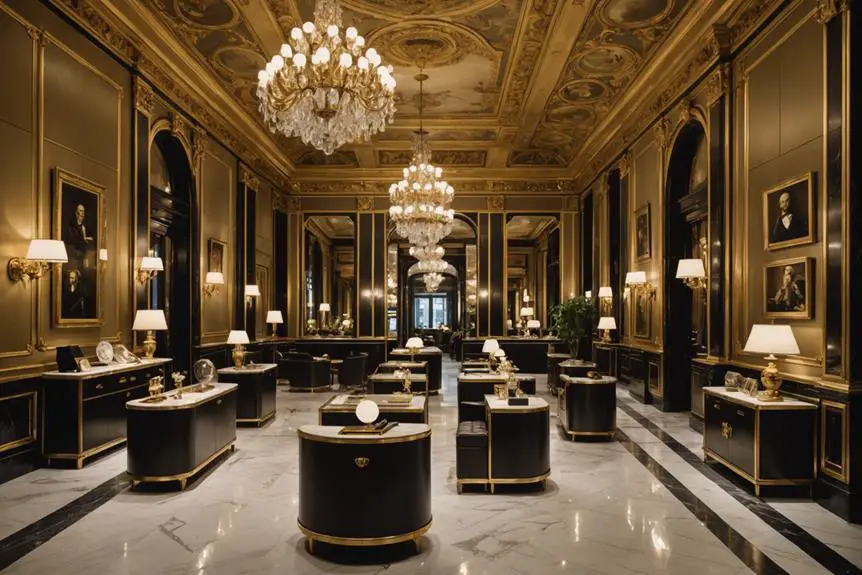Tailoring a vintage bomber jacket is all about making it uniquely yours. Start by using sharp scissors and a seam ripper to adjust the shoulder and side seams for the perfect fit. Pay attention to sleeve length and body alterations, especially around the ribbed hem. Keep the original structure intact while modernizing the silhouette. You can add personal touches like patches or custom pockets to enhance its character. Don't forget to maintain and care for your tailored jacket to keep it looking fresh. There's so much more to discover about transforming this classic piece into a true reflection of your style.
Understanding Vintage Bomber Jackets
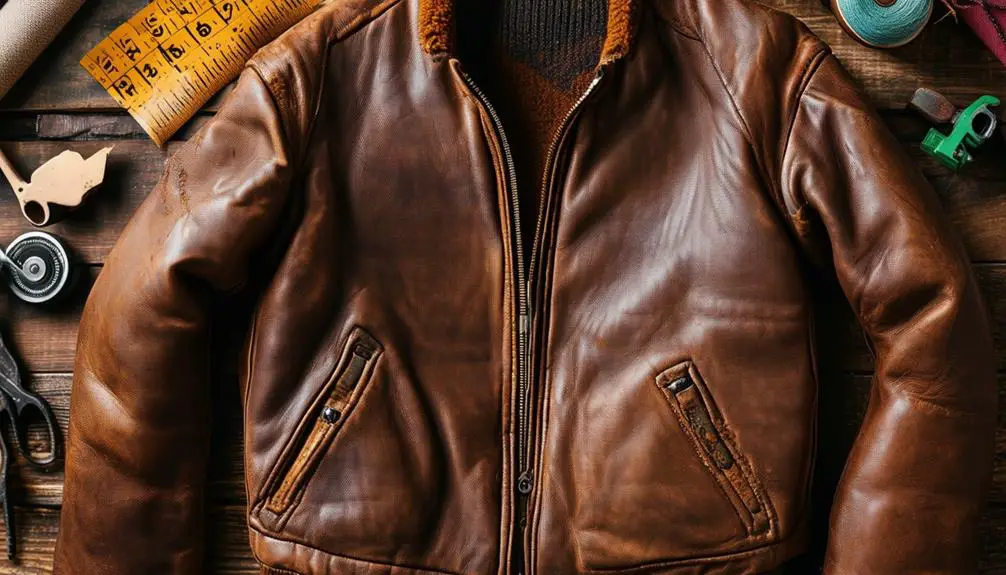
Understanding Vintage Bomber Jackets
When you think of vintage bomber jackets, you're tapping into a rich history that blends military origins with modern fashion trends. These jackets, once essential for pilots, have evolved into a stylish staple that showcases both functionality and flair. The classic design often features distinctive ribbing and unique fabric patterns, making each bomber jacket a statement piece.
Many of these jackets carry vintage clothing labels that provide insights into their history and authenticity, enhancing their appeal among collectors.
Crafted from durable materials like leather or brocade, vintage bomber jackets not only offer longevity but also exude character with their varied textures and colors. The lining fabric is vital, as it can enhance comfort while adding a touch of luxury. You'll find that many jackets boast a soft, well-constructed lining that complements the outer fabric beautifully.
What makes these jackets truly versatile is their ability to shift from casual outings to more formal events effortlessly. Understanding the design elements, particularly the side seam construction, is key to tailoring.
With the right adjustments, you can enhance the fit, ensuring that your vintage bomber jacket retains its original charm while modernizing its appearance. Embrace the uniqueness of each piece, and you'll find endless styling possibilities.
Essential Tailoring Tools
Mastering the art of tailoring a vintage bomber jacket requires the right tools, as they're indispensable for achieving a polished and professional finish.
Start with sharp fabric scissors; they'll guarantee clean cuts when you're working on those shoulder seams. A seam ripper is your best friend for any necessary adjustments, allowing you to correct mistakes without damaging the fabric.
Accurate sizing is important, so a measuring tape is a must-have for fitting. You'll also need tailoring pins or clips to hold fabric pieces together while sewing, preventing any shifting that could ruin your work.
For marking alterations, tailor's chalk or a fabric marker is essential; it allows you to make precise adjustments without leaving permanent stains.
Don't forget about pressing! An iron and ironing board are critical for flattening seams and giving your bomber jacket that crisp look.
Finally, a reliable sewing machine equipped with various stitch options will help you construct and reinforce those seams, especially when working with thicker fabrics like brocade.
With these indispensable tools in hand, you're well on your way to creating a stunning, tailored vintage bomber jacket.
Identifying Key Adjustment Areas
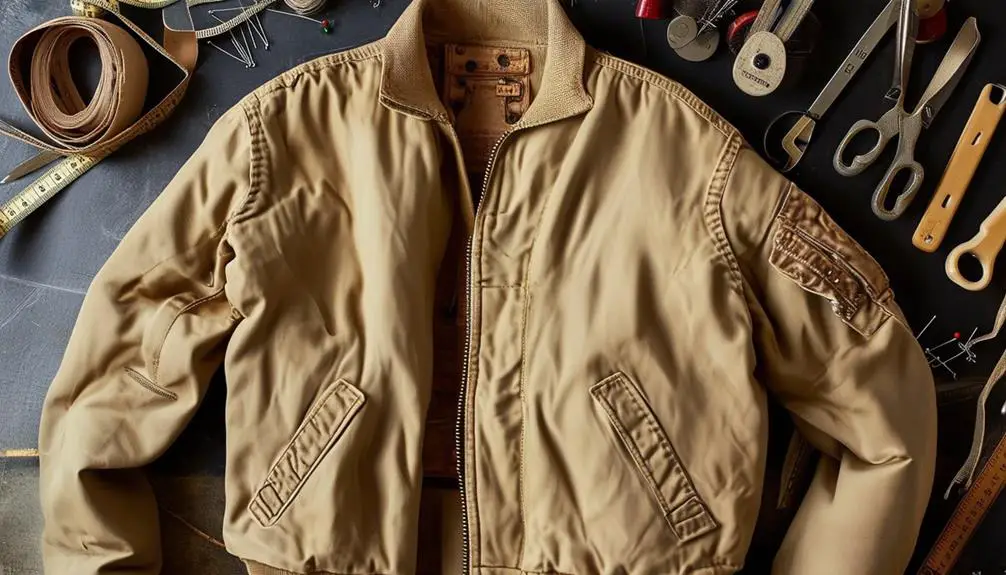
Identifying key adjustment areas is vital for transforming your vintage bomber jacket into a tailored masterpiece. Focus on the shoulder seams and armholes first; these areas are essential for comfort and style. A snug fit here allows for movement without sacrificing aesthetics. Next, consider the waist. Taking in the side seams will create a more tailored silhouette while preserving the jacket's original charm.
Now, let's turn our attention to the sleeves. Their length can greatly impact your overall look, so make necessary adjustments for a polished appearance. When altering the body length, be mindful of the ribbing at the hem to guarantee everything flows seamlessly. Finally, inspect the lining. A well-fitted lining not only enhances comfort but also provides a polished finish to your tailored bomber.
Here's a quick reference table to help you identify these key areas:
| Adjustment Area | Importance |
|---|---|
| Shoulder Seams | Comfort and style |
| Side Seams | Tailored silhouette |
| Lining | Polished finish |
Techniques for Tailoring
For a successful tailoring experience, understanding various techniques can transform your vintage bomber jacket into a standout piece that reflects your unique style.
Vintage bomber jackets, especially those from iconic brands like Betty Barclay, often feature unique design elements that can enhance your tailoring process. Here are some key techniques to take into account:
- Maintain Structure: Keep the shoulders and arms intact while adjusting the waist and body. This guarantees a fitted look without compromising the jacket's original silhouette.
- Reverse Tailoring: If you want a slightly larger fit, think about adding extra fabric through reverse tailoring. By incorporating fabric panels into the front panels, you enhance both the longevity and versatility of your jacket.
- Sketch Your Vision: Before heading to a tailor, sketch out your desired silhouette. This will facilitate clear communication, guaranteeing the finished jacket aligns with your vision and maintains aesthetic appeal, especially around zippers and sleeves.
Sewing and Assembly Steps
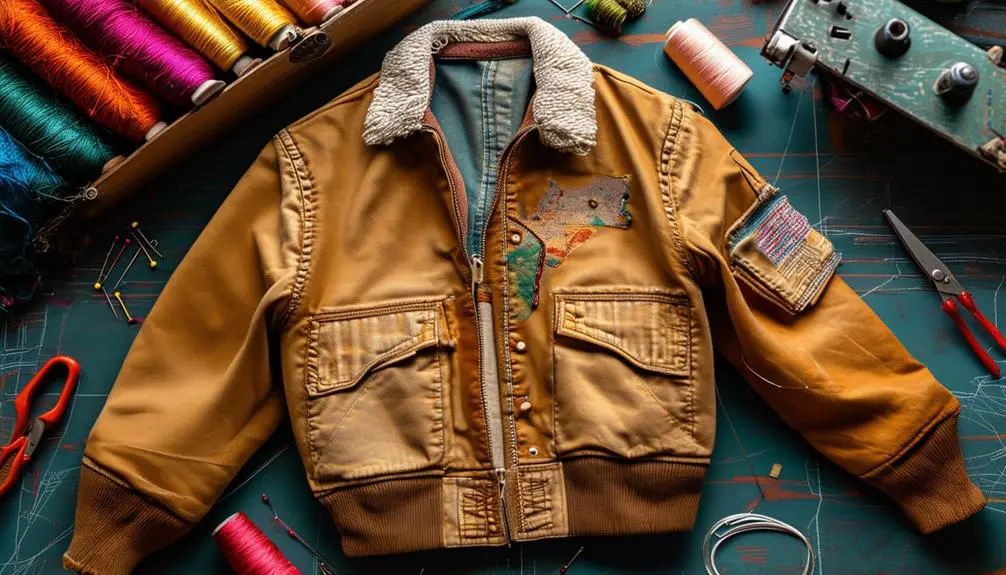
Once you've decided on your tailoring techniques, it's time to bring your vision to life through the sewing and assembly steps. Start by assembling the outer shell of your bomber jacket. Sew the front and back panels together at the shoulders, aligning the right sides together. Then, attach the sleeves by sewing from the center out for a smooth fit.
Next, create side seams by sewing from the armpit to the bottom and from the armpit to the sleeve hole. Flip the jacket right side out and topstitch the bottom half of the side seam for a polished look. For the lining, replicate this process but skip the topstitching to guarantee a clean finish.
Prepare ribbing for the neckline and waistline, making it slightly smaller for that snug stretch. Sew it between the outer shell and lining before topstitching to secure it in place. Finally, install the zipper using a zipper foot, making sure it aligns perfectly with the front panels. Topstitch around the zipper and secure all edges for a professional finish.
| Step | Description |
|---|---|
| Assemble Shell | Sew front and back panels, attach sleeves |
| Create Side Seams | Sew armpits to bottom, flip jacket and topstitch |
| Prepare Lining | Assemble lining without topstitching |
Adding Personal Touches
When it comes to personalizing your vintage bomber jacket, the possibilities really open up. You can transform your jacket into a one-of-a-kind statement piece that reflects your individual style.
Understanding the history behind your jacket's vintage labels and tags can also inspire creative decisions in your customization process. Start by adding unique embellishments like patches or embroidery to the outer surface. This not only showcases your personality but also enhances the cultural value of the garment.
Here are three creative ideas to contemplate:
- Contrasting Ribbing: Incorporate vibrant ribbing on the collar or cuffs to create a bespoke look without compromising the jacket's original design.
- Custom Pockets: Upcycle leftover fabric from other projects to craft custom pockets or add extra lining, making your jacket not just stylish but also functional.
- Personal Label: Create a custom label or tag for the inside of the jacket. This small detail adds a meaningful touch, telling your sewing story and celebrating your unique transformation.
Caring for Tailored Jackets
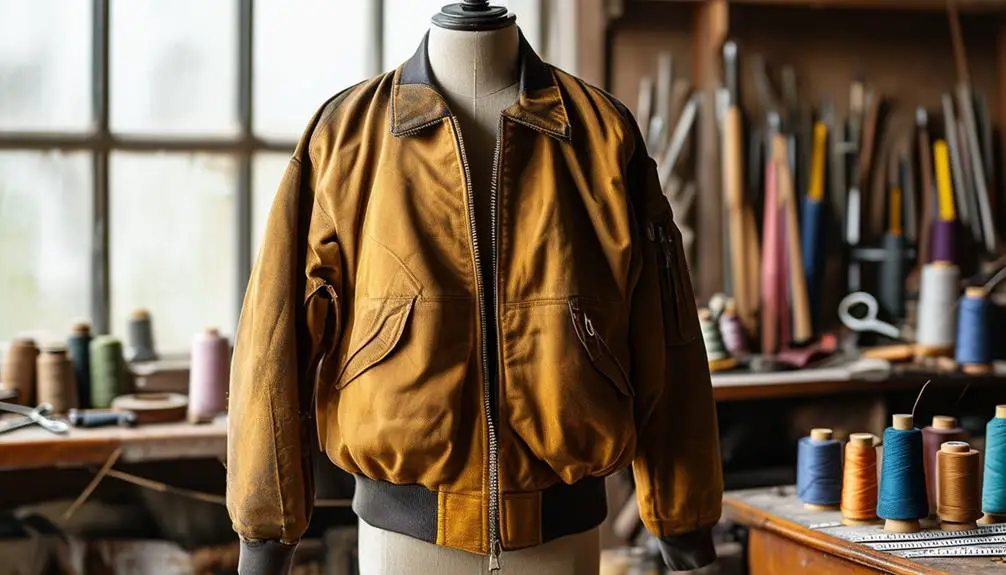
Caring for tailored jackets is essential to keep them looking sharp and stylish over time. Start by regularly inspecting your jacket for any signs of wear, like fraying or loose threads. Catching these issues early can help maintain their appearance and guarantee your investment lasts.
Always follow the fabric care label; many tailored jackets require dry cleaning, especially those made from delicate materials like brocade.
When storing your jackets, opt for padded hangers to avoid stretching and maintain their shape. Standard hangers can create unsightly shoulder dimples that detract from the jacket's tailored look.
Also, be mindful of sunlight—exposing your jacket to direct sunlight for extended periods can fade its colors and damage the fabric.
To minimize wear and tear, rotate wearing your tailored jackets. This practice not only keeps them looking fresh but also allows you to enjoy the variety in your wardrobe.
Building Relationships With Tailors
Building a strong relationship with your tailor can transform your wardrobe into a personalized collection that truly reflects your style. When you invest in building ongoing relationships with tailors, you're not just getting alterations; you're revealing a world of creativity and craftsmanship.
Here are three key ways to nurture this connection:
- Communicate Your Vision: Collaborating with tailors means sharing your ideas. Discuss fabric choices and adjustments that resonate with your personal style, ensuring they understand your preferences.
- Support Local Tailoring Businesses: By choosing local tailors, you contribute to the revival of traditional crafting practices. This not only sustains local economies but also fosters a sense of community, as you become part of a network that values craftsmanship.
- Learn and Engage: Engaging with tailors enhances your understanding of garment construction. As you learn from their expertise, you'll refine your sewing skills and elevate your fashion sense, resulting in tailored garments that reflect your evolving style.
Investing time in these relationships pays off, leading to unique pieces that enhance your wardrobe and celebrate sustainable fashion.
Community Engagement in Tailoring
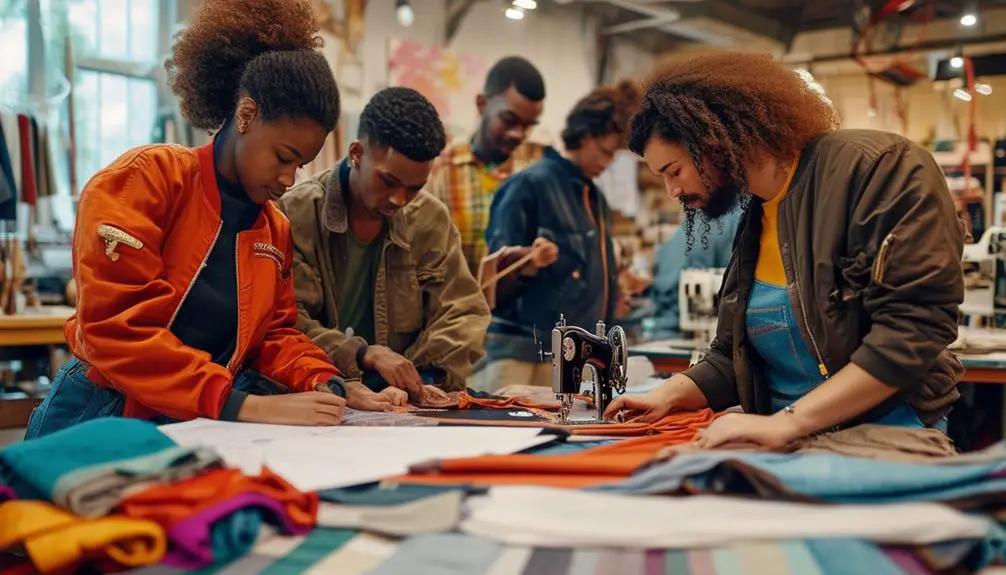
Engaging with your local tailoring community can elevate your experience with vintage bomber jackets, turning a simple alteration into a delightful collaboration. By building relationships with local tailors, you foster a sense of community that enhances your jacket's uniqueness.
You'll discover that these tailors not only bring expertise but also a personal touch, making every alteration a reflection of your style.
Joining community workshops or events focused on tailoring offers invaluable hands-on experience and knowledge sharing among fellow enthusiasts. You'll learn new techniques and tips while forming connections with others who share your passion.
Online platforms like TikTok are buzzing with trends, allowing you to share your projects and gain inspiration from Gen-Z audiences enthusiastic to showcase their creativity.
Participating in local sewing groups or forums creates a supportive network where you can exchange ideas, seek advice, and celebrate successes. The feedback you receive can lead to innovative solutions that inspire your tailoring endeavors.
Ultimately, community engagement not only enhances your skills but also enriches your journey in making your vintage bomber jacket truly your own.
Frequently Asked Questions
Can a Bomber Jacket Be Altered?
Absolutely, you can alter a bomber jacket! Whether it's adjusting the fit, shortening sleeves, or revitalizing its style, tailoring breathes new life into your piece, ensuring it reflects your unique vibe while maintaining its character.
Can You Tailor a Nylon Bomber Jacket?
Yes, you can tailor a nylon bomber jacket. Just remember to use sharp pins and anti-fraying spray for clean edges. Accurate measurements keep its shape intact, ensuring your jacket looks stylish and fits perfectly.
How to Tighten a Bomber Jacket?
To tighten your bomber jacket, adjust the waist by taking in the side seams. This enhances the fit, creating a sleek silhouette. Remember to keep the shoulders and arms intact for comfort and style.
Can I Sew a Bomber Jacket?
Yes, you can sew a bomber jacket! Start by choosing your fabric, follow the right sewing techniques, and take your time. With practice, you'll create a stylish piece that showcases your unique flair and craftsmanship.


